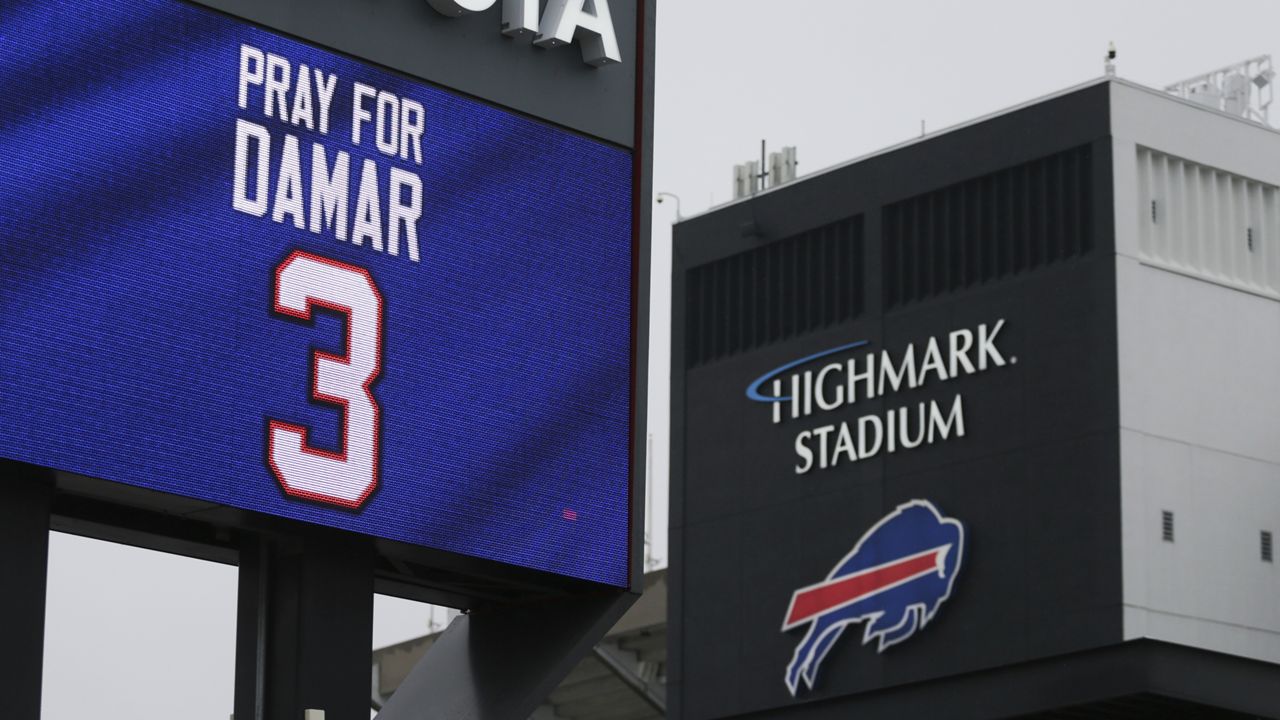Football teams have advanced medical equipment and highly trained medical personnel on standby to treat everything from minor injuries to those that could be potentially life-threatening.
“Statistics show for every minute without defibrillation, your chance of survival goes down 10%," said veteran paramedic Ahmed Mustafa.
Mustafa, the president of North East Quadrant Advanced Life Support, is a Bills fan and was watching the game when Bills’ safety Damar Hamlin collapsed Monday night in a game against the Bengals in Cincinnati.
“He had an ambulance on the field in minutes,” Mustafa said. “He had athletic trainers. He had doctors and surgeons. And he had a paramedic ambulance, I think. And so within minutes, he had the best chances of survival. He basically had an emergency room and an operating room converge upon him at the time of the event.”
Mustafa displayed some of the medical equipment he believes was likely used to treat Hamlin.
“We will presume that this is what a typical paramedic-level ambulance would come out of the ambulance with,” he said. “You've got a cardiac monitor, some people refer to it as a defibrillator. It monitors your EKG so we can see what you're doing. It allows you to shock a rhythm that needs shocking. We can pace a heart. We can do a lot of different things with this. It'll let you take your blood pressure and your pulse oximetry.”
The device is more advanced than an AED – or automated external defibrillator.
“An AED is what people will see in the community for public access defibrillation,” he said. “So the AED is an automated external defibrillator. So it's for people who don't have the ability to use a manual one, it becomes a team lead. It gives you CPR directions. It will shock if warranted."
In the case of a football player, assessing the damage could take longer because of the helmet, pads and gear.
“This person is wearing pads and a helmet which makes getting access to the patient a little bit more complicated,” he said. “And though he may have suffered cardiac arrest, we don't know why. [It] could have been a neck or head injury. So you've got to take the precautions as you're removing the helmet, which takes minutes to secure the head underneath and safely remove the helmet so you don't cause any potential neck injury or exacerbate a head injury. You will try and cut off the pads and the shirt so you can start evaluating the patient and treat as appropriate. But all of these things, you know while we're sitting in our living rooms, holding our breath it seems like forever. Those guys were working fast, I'm sure, yesterday.”
Mustafa says time is critical.
For every minute that person is not breathing, they're losing heart muscle," he said. "They're losing brain cells or internal kidneys [and the] liver. They're all starting to suffer. And so you need definitive interventions quickly. And that's why all these professional teams have ambulances, athletic trainers, doctors and surgeons - because they want to make sure that in the event of a catastrophe like this, they're prepared.”



